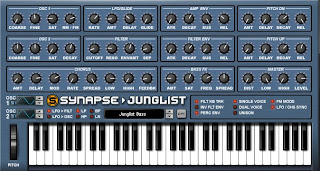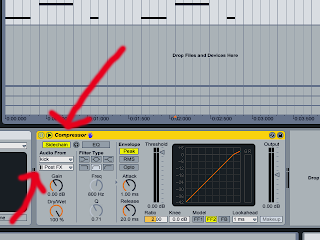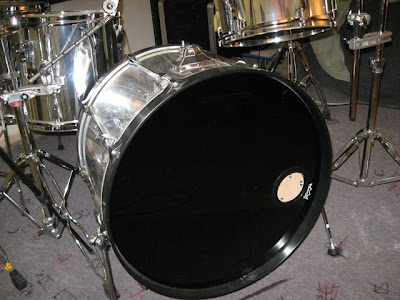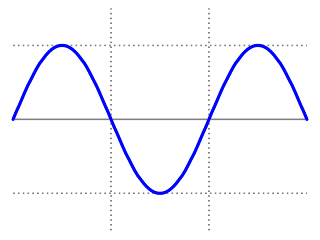
You've bought or "acquired" a synth. You're looking at it. You've played with the basic sounds & presets And you're wondering, now what?
You have two options here. You can stay huddled with the masses,
happy to play on the presets, using the same noises & synths that everyone else does. Or you can break out into a better territory, learn how to put your own sounds together and make new and fresh sounds that sound nothing like anyone else.
(this makes WAY better & less annoying tracks).
Knowing how to put sounds together isn't about being clever. It's more about giving yourself a whole lot more time for learning.
Instead of being stuck with the original factory presets you'll be able to turn your synth into anything you want it to be.
And if you have one of the more upmarket modelling synths, you'll have an endless supply of full-on custom sounds to spread around your tracks. You'll also be able to tweak the sounds that are there already if they don't quite fit with what you're working on.
The easy and foolproof way to do all this is to cheat. Either buy some new sounds or download them from the Net, You can find a lot of user libraries online if you want extra presets for you weapon of chice.
Of course, if you take this route, you're still stuck with someone else's idea of what sounds good. Some sets of sounds are excellent - better than the factory
sets in fact - but even so, it's still incredibly useful to know why they're good and perhaps how to modify them to suit a different context. (reverse engineering someone else's synth preset can teach you loads).
So what's involved in creating sounds? You need to know two things. The first is a brief idea of how sounds work in general. The second is an understanding of how the bits inside a synth - and all the knobs and sliders - control the different aspects of a sound.
Start with getting to know how sound works. Any sound or group of sounds, whether it's a butcher chopping meat, a beer can stood on or 190bpm gabba track, its made up of three things.
Firstly there's pitch: high trebly noisey tweaks at one end and low floor-shaking bowel busting bass at the other. Most sounds have a definite pitch.
Some, like waves, don't.
Some are halfway between the two, with a sort of hint of pitch, like the sound of the wind.
Next there's colour. Colour - sometimes called 'timbre' in the books - is the quality that lets you tell one instrument from another, even though they may be playing the same note.
Imagine an expensive acoustic guitar, and a
cheap electric. Play the same note on both and the pitch is identical. But the tone is completely different. Similarly a note on an oboe and a flute sounds different; different enough to be able to tell one instrument from the other.
Finally there's loudness. This is basically just volume; the difference between loud and quiet.
All of those three things will tell you all you need to know about one moment in the sound's life. But real sounds evolve and change, either slowly between notes or rapidly during the course of a note.
Pitch can be wobbled (wub wub wub) to create tremolo. Or it can
glide between notes, instead of changing instantly. This is often known as portamento (acid stylee).
Colour changes rapidly when you pluck a note on a guitar; the sound starts sharp and bright and then quickly fades to something much more mellow. And - if you think of that same note again - the volume changes quickly too, with an initial quick attack and then a slow fade to silence.
In terms of longer changes, sounds can fade in and out and become brighter or more mellow with respect to the other sounds around them. Colour is also tied to how hard you press, pluck, blow or otherwise get a noise out of an instrument; usually the harder you do whatever it is you need to do, the brighter the note.

The real dealioSo how does a synth go about controlling and manipulating this vast universe of sound? Well, quite easily actually.
Inside every synth you'll find a collection of boxes that either create raw sound or shape it in some way. Some boxes work with sound directly. Some boxes control what other boxes do.
Overall, it's the settings for each box and the way they're linked together that create the final sound. The more boxes there are, and the more settings they have, the more complicated and interesting the sounds you can make with them. (this includes dropping other vst FX over your synth).
The simplest synths to program are also the most popular. They're called analogue or sometimes analogue modelling synths because they're based on original synth design ideas, but updated to use your computer instead of transistors. A lot of synths you cant even tell the difference from the original to the vst).
An analogue synth sound starts with one or more oscillators. On their own, these sound a bit basic; a kind of annoying moped engine sound.
If you play the keyboard, the buzzing changes in pitch. There's usually some kind of
octave setting, which controls whether you get bass, mid or treble moped sound.
On most synths there's a range of ways you change the colour of this basic buzz. You can switch between what are called waveforms and the names of the waveforms come from the shapes you'd see if you watched them in an oscilloscope.

A Square wave
The classic waveform is the pulse, but as you can manipulate soundwaves, there are
variations on the shapes.
Usually a synth provides some or all of the five basic waves: sawtooth, square, pulse, sine or triangle, or variations on them. (NI massive lets you flutter between 2 at a time with each osc).
Each wave sounds different:
- Sine and triangle waves sound pure and flutey, because of the equal climbs and falls between the peaks and troughs.
- A sawtooth wave, with its gradual climb but sudden drop gives a full-on bright rasp.
- A square wave is literally on then off, so its wave shape looks brutally, er, square. It produces a mellow but bright sound.
- Pulse - if it's available - looks like and sounds similar to sine, but in place of the low troughs, it has level plains.
On some synths, it can be made to shift using a trick called 'pulsewidth modulation' which produces a slow sweeping effect that adds interest to the sound.
Extra soundsOn some synths there are different variations on these basic shapes. You might get two or three saw waveforms, perhaps based on the sounds of different antique synths.
Better synths have two oscillators. You can detune them, so they don't play at exactly the same pitch. This fattens out the sound or - at extreme settings - makes it out of tune. Some synths have more than two oscillators, which gives you an even fatter, heavier sound.
After the oscillators, you'll find a mixer section which controls the level of each oscillator. Often here you'll find an option to add 'noise' which is basically an unpitched rushing or rumbling sound. (You can find white noise etc, I'm still looking for the "brown sound").
So far, what we've got sounds kind of scary, in a brainwashing scene from a bad 60s spy film kind of way. You've got a constant rasp or buzz, perhaps filled out with rushing or rumbling. It may be quite a rich-sounding rasp or buzz, but it's still too basic to listen to for long periods.
The filter optionSo next comes the filter. This takes some of the rasp or buzz away, and optionally adds some famous synth acidy squelchy goodness. Filters do a lot to make the character of the final sound appealing or not which is why people go on about them so much.... they are important!!
The most important control on a filter is a knob marked Cutoff. The filter acts a bit like a gate which you can open and close. When it's fully open the sound comes through unchanged. As it closes more and more of the treble part
of the sound gets filtered out. (depending on your cosen filter).
It's a bit like the 'Before' and 'After' photos you see in those ads for men to "increase your size".
Before the filter process, the sound is pretty rough , and
after it's clean.
When the filter's fully closed you typically won't hear anything much, apart from perhaps an occasional bassy thump (awesome for doubling up osc's to make HUGE bass). In between you get the raw sound of the oscillator(s) with some of the brashness removed. And, of course, it almost goes without saying that you don't have to leave the filter at one single position. That's ow the "acid" sound is made, By tweaking.
By moving the filter from fully closed to fully open the sound gradually changes, and if you do this during a track, you get the classic filter sweeps so beloved of the rave generation.
Following on from the filter is an amplifier. This controls final volume, in the usual volume control way. But it's also where the loudness curve of the sound is shaped, using a different section of the synth, which we'll get to in a paragraph or two.
Full effectFinally, most synths have some built-in effects to fatten up the sound some more. These add shimmer, space and depth to the finished result, and they go a long way to making the sound appealing. If you turn them off on just about any synth the result immediately sounds lame.
I'll talk about FX in another blog. For now it's enough to know they're there and they're important.
Time and spaceThat's an outline of the path the sound follows. But there's more to a synth than that. Remember there are also ways to shape how a sound evolves over time? These next few items control how that happens. Typically you'll find one or more Low Frequency Oscillators (LFOs).
These produce a slow wobble, which can be connected to control the pitch of the oscillators, the cutoff of the filter or the volume (
see my tutorial on wobble bass here 'Slow' means anything from a full wobble every second or two, to a steady whirr.
For vibrato - that opera singer gut jiggle effect - the wobble might be set up to happen a few times a second. For colour changes, really slow sweeps of the filter cutoff can sound great.
For volume changes, the wobble creates an effect called tremolo, where the sound fades in and out very quickly;
interesting, but not used that much. As with the standard oscillators, you can set the shape of the wobble using a very similar set of waveforms.
An interesting addition you'll often find here is a random waveform that changes regularly.
Routed to the filter cutoff, this creates a classic bubbly synth sound. Better synths have more than one LFO. Really good ones have two or three per note.
In the envelopeApart from LFOs, you'll also find envelope generators. These produce a curve that 'plays' every time you hit a key.
The most popular sort of envelope generator is called an ADSR. The curve starts at zero, ramps up to full(Attack), ramps down to a fixed level (Decay), stays there as long as you hold the key (Sustain), and ramps down to zero when you let go (Release).
ADSRs are a good mix between complexity and sophistication. Routed to an oscillator they sweep the pitch up and down; again, more of an interesting effect than a useful one. Connected to a filter they open and close it, making that characteristic swept sound that synths are so good at. Connected to an amplifier, they control the
volume, creating notes that fade in and fade out slowly, or attack quickly and fade out slowly, or both attack and fade quickly.
More sophisticated synths have more complex envelopes, with lots of ramps and times and levels to play with.
Sometimes these can be set to loop so that when the envelope gets to the final release part of the cycle it starts from the attack again.
Finally, you'll find some way of controlling how the LFOs and envelopes are connected to the oscillator, filter, and amp.
Sometimes this is fixed - you get controls for each possible setting - but there's no way to (say) connect the LFO to the amplifier (find another synth). Sometimes there's some kind of internal connection system which lets you route things to
other things. This is obviously a better option, but it can take a while to get your head round it.
So, there is the basics. You'll find an oscillator, filter, amplifier and a basic envelope in every synth.
In better synths you get more of everything: more oscillators, more kinds of filter, more sophisticated amplifier options, lots of LFOs and envelopes and plenty of effects.
You have a synth, now would be a good time to see if you can work out how all this works in the real world. Why not get yourself a midi keyboard for hands on feel,
It adds different dimensions to your sound.










.png)





























